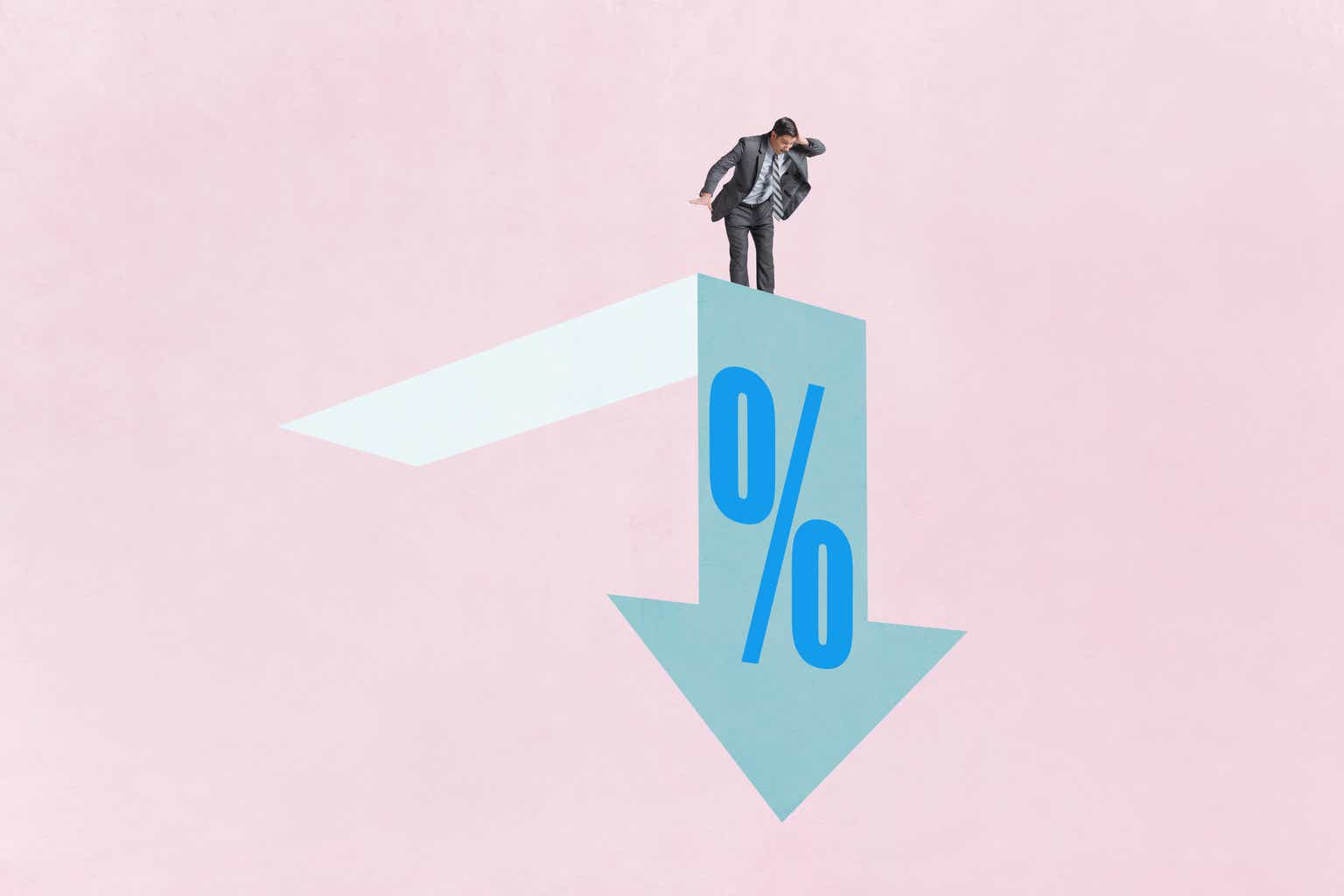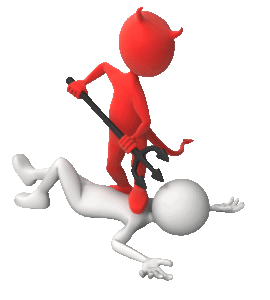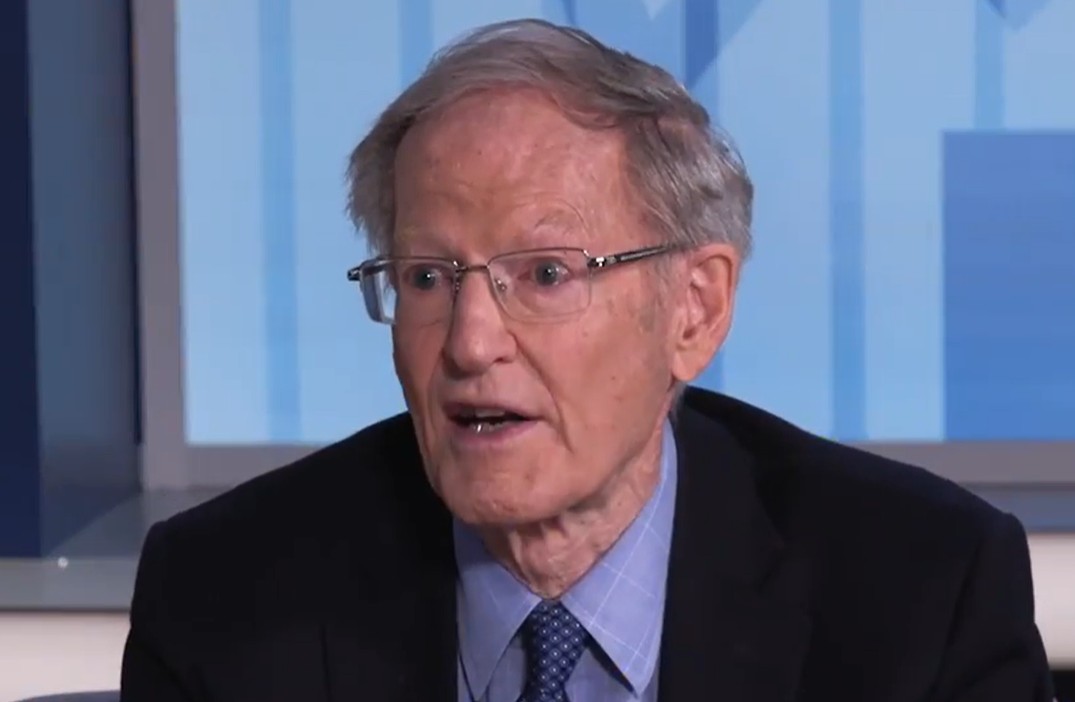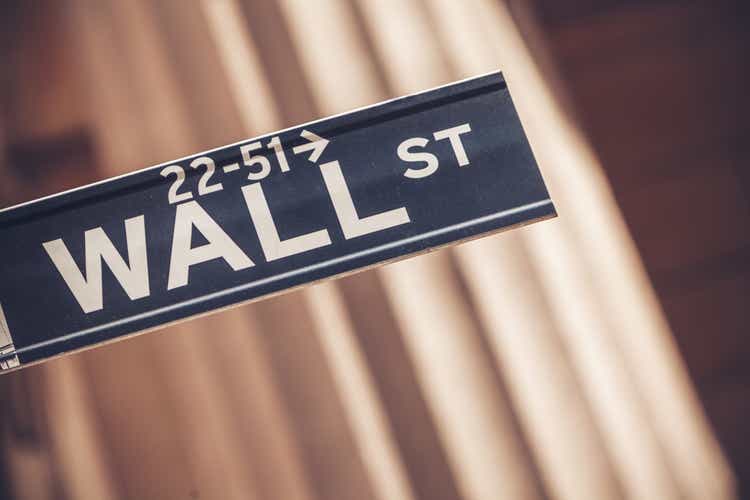naphtalina/iStock via Getty Images
Stocks should see a “buyable bottom” when the CBOE Volatility Index (VIX) tops 40 from today’s ~30 reading – a spike likely to coincide with the Fed returning to rate cuts and creating a “Powell put,” Wells Fargo strategists say.
“Look for a 40 handle [on the VIX],” Wells Fargo Securities Equity Analyst Christopher Harvey and his colleagues wrote in a recent note. “A VIX > 40 has historically coincided with SPX -4% (average 1-day) and helped trigger the ‘Powell put.’ In other words, the environment needs to get worse before a monetary-policy pivot marks a longer-term buyable equity bottom.”
The analysts looked at VIX data going back more than 20 years and found that whenever the volatility index topped 40, the Federal Reserve usually was about to start cutting rates or had already begun doing so.
Looser monetary policy is usually a positive for stocks because weak interest rates make equities look more attractive than bonds or money-market accounts. Some call this the “Fed put” or “Powell put,” after current Federal Reserve Chairman Jerome Powell.
Harvey and his colleagues wrote that while the U.S. central bank doesn’t officially factor stock prices into its interest-rate decisions, “history shows an uncanny relationship between [VIX] spikes and Fed activity. When the VIX (VIX) has breached 40 (e.g., Sep ’01, Jul ’02, Sept ’08, Feb ’20, Oct ’20), the Fed was about to start (or already in) an easing cycle.”
A 40+ VIX Preceded 2008-09’s Final Bottom
For example, the Wells Fargo analysts noted that the market moved toward its 2008-09 bottom once the VIX (VIX) shot up to 47 on Sept. 29, 2008, after Congress initially voted down the Great Recession’s Troubled Asset Relief Program.
The VIX spike occurred when the Fed was well into a rate-cut cycle, and 40+ reading coincided with the start of one of the final 2008-09 legs down for the S&P 500, which bottomed out some five months later.
The Signal Has Failed Just Three Times Since 2001
The analysts said a 40+ VIX (VIX) has only failed to overlap with a Fed rate-cutting cycle just three times since 2001.
The first instance came in May 2010 when the central bank’s Quantitative Easing I program had just ended, while a second case occurred in August 2011 when the Fed funds rate was already at 0%. Markets saw a third instance in August 2015, when volatility spiked and the S&P 500 (SP500)(SPY) fell 9% in two weeks because the People’s Bank of China had just devalued the yuan.
No 40+ VIX in Two Years
As for recent times, the VIX (VIX) hasn’t topped a 40 reading since October 2020 − more than a year before the S&P 500’s current downturn began:

The Wells Fargo analysts wrote that the lack of a 40+ VIX spike in today’s market cycle means that “the environment needs to get worse before a monetary-policy pivot marks a longer-term buyable equity bottom.”
“Much to the chagrin of volatility traders, the VIX (VIX) has been well-behaved year to date,” they wrote. “Volatility expectations − especially on far-downside options − have kept the ‘fear gauge’ somewhat suppressed … for now.”
VIX ETFs Have Been Crushing It
Still, ETFs and ETNs based on the Volatility Index (VIX) have had a good year so far. For instance, the iPath Series B S&P 500 VIX Mid-Term Futures ETN (VXZ) is up a category-leading 16.7% year to date.
Meanwhile, the ProShares VIX Mid-Term Futures ETF (BATS:VIXM) has gained 16% YTD and the iPath Series B S&P 500 VIX Short-Term Futures ETN (BATS:VXX) is +11.2%.
For more macro-market news and analysis, click here.








































